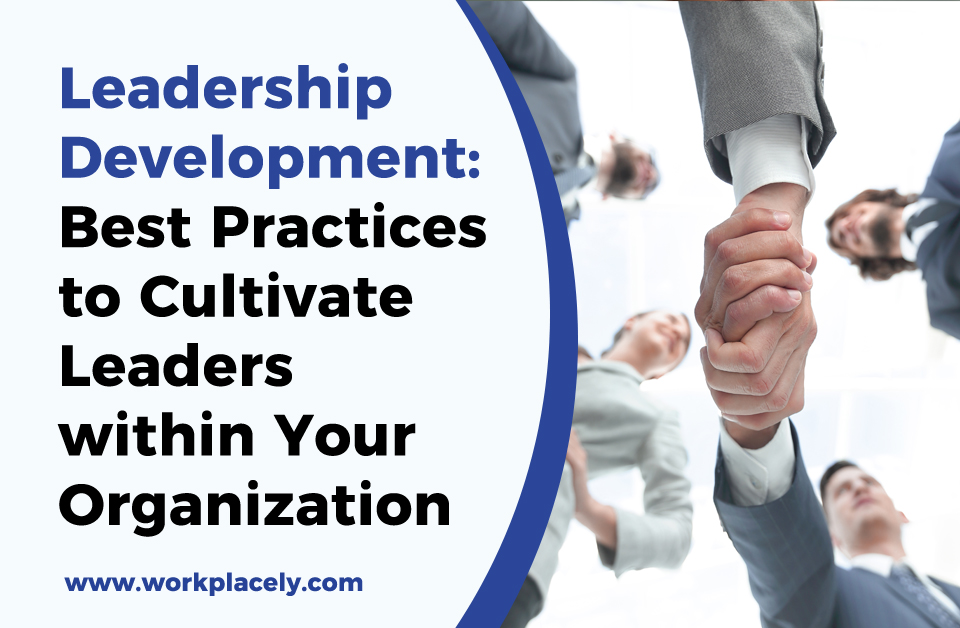4 Min. Read.
Leadership development is vital for the long-term success of any organization. It ensures a pipeline of talented individuals ready to step into leadership roles as needed. This article explores some best practices for cultivating leaders within your organization.
1. Leadership Training
Effective leadership training programs are essential for developing the necessary skill set for leadership roles. Some best practices for leadership training include:
● Tailoring training programs for the specific needs of your organization.
● Providing opportunities for practical application of leadership skills through simulations or real-life projects.
● Offering ongoing training and development ensures that leaders have the latest knowledge and skills.
Tailoring Training Programs
Tailoring leadership training programs to meet your organization’s specific needs is crucial for ensuring relevance and effectiveness. It involves identifying the key competencies and skills essential for your organization’s leaders and designing training modules that address these areas. By customizing the training programs, you can ensure that leaders receive the most relevant and impactful training possible.
Providing Practical Application Opportunities
Providing opportunities for practical application of leadership skills reinforces learning and skill development. Simulations or real-life projects can provide leaders hands-on experience applying their knowledge and skills in a realistic setting. This practical application helps leaders develop confidence in their abilities and prepares them to handle real-world leadership challenges effectively.
Offering Ongoing Training and Development
Leadership is a dynamic field, and new challenges and opportunities arise regularly. Offering ongoing training and development ensures that leaders have the latest knowledge and skills needed to address these challenges. Ongoing training can include workshops, seminars, webinars, or online courses covering emerging trends, best practices, and new technologies relevant to leadership.
2. Succession Planning

Succession planning involves identifying and developing employees who can fill key leadership positions. Some best practices for succession planning include:
● Identifying high-potential people early in their careers and providing them with opportunities for growth and development.
● Creating a talent pool of potential leaders who can be groomed for future leadership roles.
● Ensuring a clear and transparent process for identifying and selecting candidates for leadership positions.
Identifying High-Potential Employees
Identifying high-potential employees early in their careers is essential for succession planning. It involves assessing employees’ performance, skills, and potential for growth. Once identified, high-potential employees should be provided with opportunities for growth and development, such as mentoring, training, and challenging assignments, to help them prepare for future leadership roles.
Creating a Talent Pool
Creating a talent pool of potential leaders is crucial for ensuring qualified candidates are available to fill key leadership roles upon vacancy. It involves identifying people who can take on leadership roles and providing them with the necessary development opportunities. By creating a talent pool, organizations can reduce the risk of leadership gaps and ensure a smooth transition when leadership changes occur.
Establishing a Transparent Selection Process
Establishing a clear and transparent process for identifying and selecting candidates for leadership positions is essential for ensuring fairness and accountability. This process should be based on objective criteria, such as performance, skills, and potential, and should involve input from multiple stakeholders, such as managers, peers, and HR professionals. Organizations can ensure that the most qualified candidates are selected for leadership roles by establishing a transparent selection process, regardless of personal biases or preferences.
3. Talent Development
Talent development is about creating a culture that values learning and growth. Some best practices for talent development include:
● Providing people with opportunities for continuous learning and development.
● Encouraging them to take on new challenges and stretch assignments to develop their skills.
● Recognizing and rewarding them for their contributions to talent development and leadership.
Continuous Learning Opportunities
Providing employees with continuous learning opportunities is crucial for talent development. It can include formal training programs, workshops, seminars, and online courses. By encouraging employees to learn and develop their skills continuously, organizations can ensure that they remain competitive and capable of taking on leadership roles in the future.
Encouraging Stretch Assignments
Another key aspect of talent development is encouraging staff to take on new challenges and stretch assignments. These assignments allow employees to leave their comfort zones and develop new skills and competencies. Employees can demonstrate their leadership potential and prepare for future leadership roles by taking on stretch assignments.
Recognizing and Rewarding Contributions
Recognizing and rewarding people for their contributions to talent development and leadership is essential for maintaining a culture that values learning and growth. It can include acknowledging employees’ efforts in developing their skills and offering opportunities for advancement and growth within the organization. By recognizing and rewarding people for their contributions, organizations can motivate them to continue developing their talents and capabilities.
Final Word
Cultivating leaders within your organization is essential for long-term success. By implementing these best practices for leadership development, you can ensure that your organization has a strong pipeline of talented leaders ready to take on future challenges. Invest in your leadership development efforts today to secure a successful tomorrow for your organization.
Learn how the Workplacely platform can aid leadership development to benefit your employees and organization.




